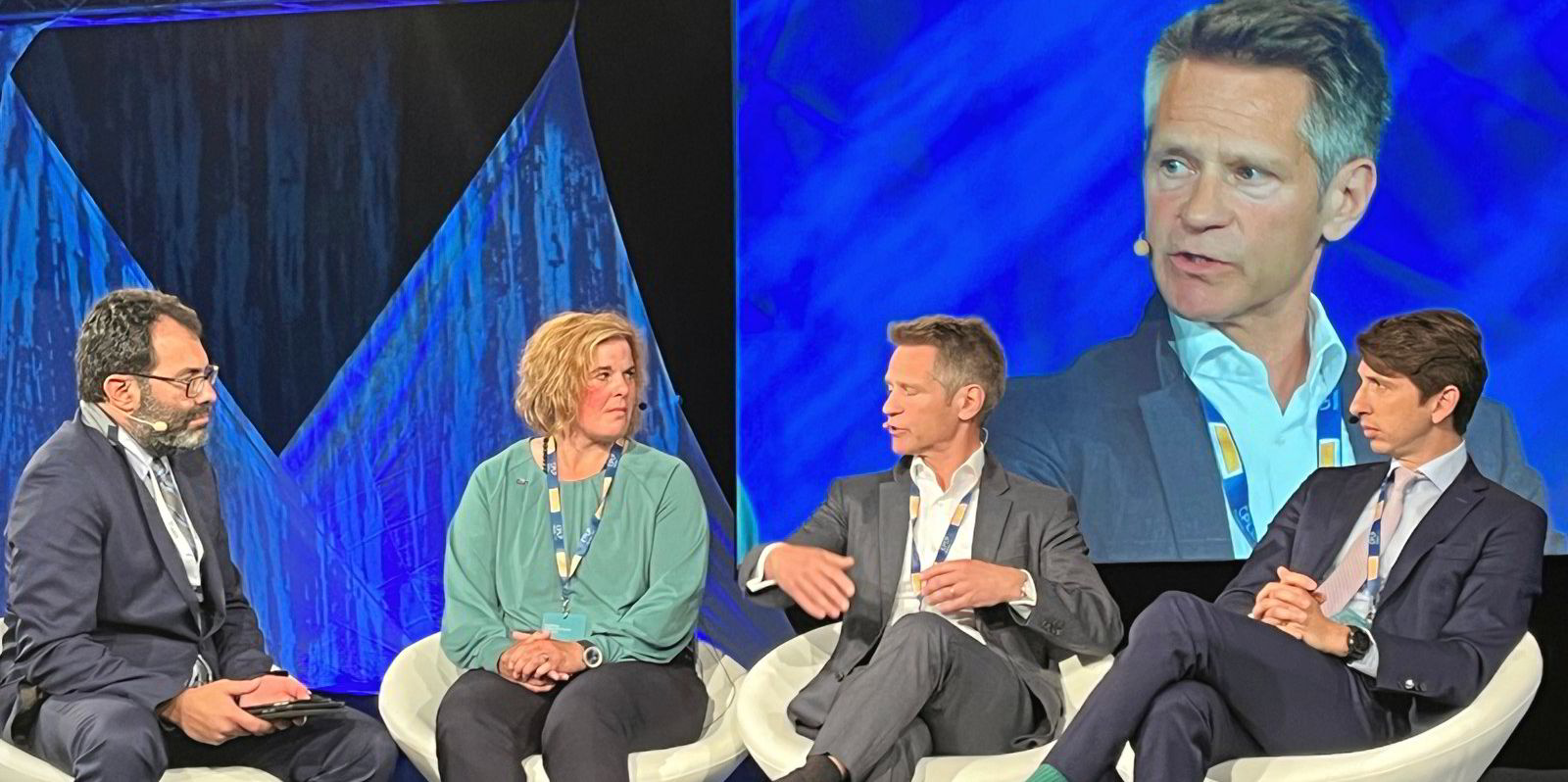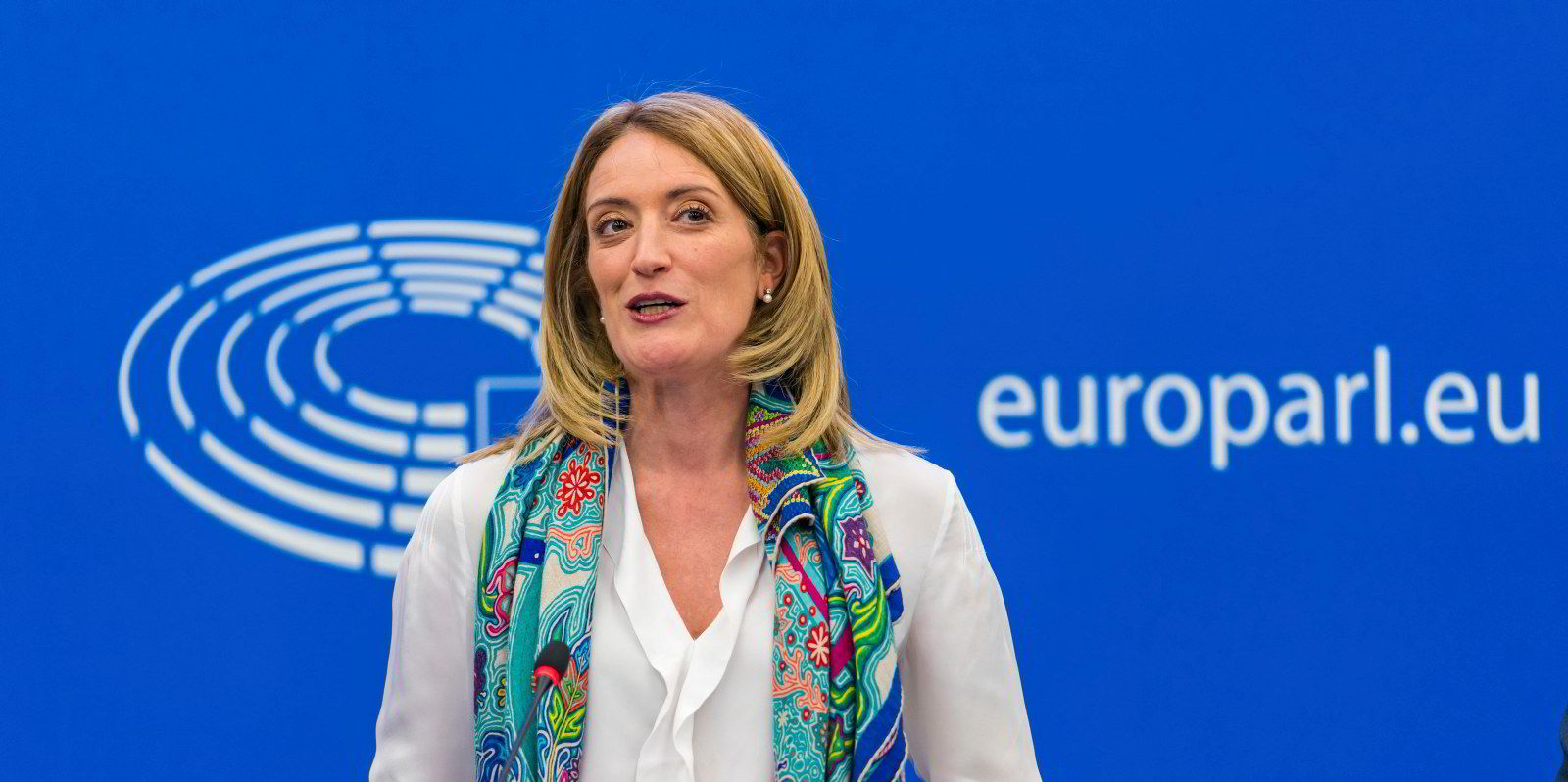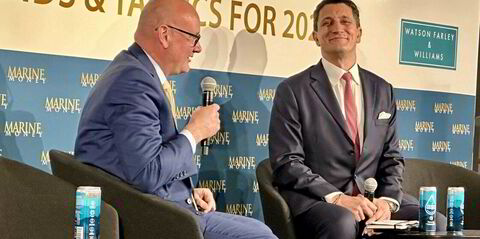Not all of shipping is equally prepared for the advent of Europe’s carbon trading system. But those who have done their homework are welcoming the step as one shipping has long needed.
And not least that pricing based on the “polluter pays” principle has to be implemented globally.
“Now we will finally do what we should have done for a few years, which is putting a price on carbon, putting a price on emissions, and allowing us to make the right decisions together with shipowners,” said Trafigura’s global head of wet freight Andrea Olivi at the TradeWinds Shipowners Forum held during this year’s Nor-Shipping conference in Lillestrom near Oslo.
He and others gathered on the TradeWinds stage on Wednesday expressed impatience about a global follow-up, rather than anxiety about the regulatory burden and the volatile, spiking prices of the EU allowance that operators will have to buy for European trading.
Engebret Dahm, chief executive of Klaveness Combined Carriers, concurred.
“We are finally getting the incentives to change the way our business is run,” he told the panel.
BRS senior carbon analyst Antonello Zanfaradino was not alone in suggesting that the present price of carbon is far too low to bridge the gap between conventional fuels and fuels of the future.
The price differential should be three or four times as great, said Klaveness boss Dahm.
But at present levels, it already will provide real encouragement to investment, both on the part of shipowners and on the part of fuel producers looking to provide new products.
Dahm and Olivi represented shipowning and chartering heavyweights on the TradeWinds panel, where they were joined by financiers and experts including Zanfaradino plus Frederic Bouthillier, head of shipping at Vertis Environmental Finance, and Sofia Furstenberg Stott of Furstenberg Maritime Advisory.
The forum was convened by TradeWinds US bureau chief Eric Martin.
Separately to TradeWinds, Dahm underscored a message several panellists had already touched on the need for the IMO to implement a global version of the EU emissions trading scheme (EU ETS).
“Now all eyes are on London for the IMO meeting in July,” said Dahm.
“The challenge of the EU ETS is that it’s a regional body trying to introduce a global measure,” Olivi said onstage.
But the Trafigura man said he was optimistic because of the industry’s previous experience with regulations starting regionally and winning global adoption.
“I believe the IMO will over the next three or four years develop a global carbon price,” he told panellists. “It’s a great opportunity for the industry to do the right thing.”
The price of carbon presents a spiking and volatile curve since the beginning of the year, but BRS’ Zanfaradino counselled owners to take advantage of that.
“Shipping is now joining the rest of the world, and doing so at a moment when carbon prices are sky high but also volatile,” he said.
“We advise them to take advantage of the information we provide, to catch the lows and use the system as a tool to be more competitive.”




